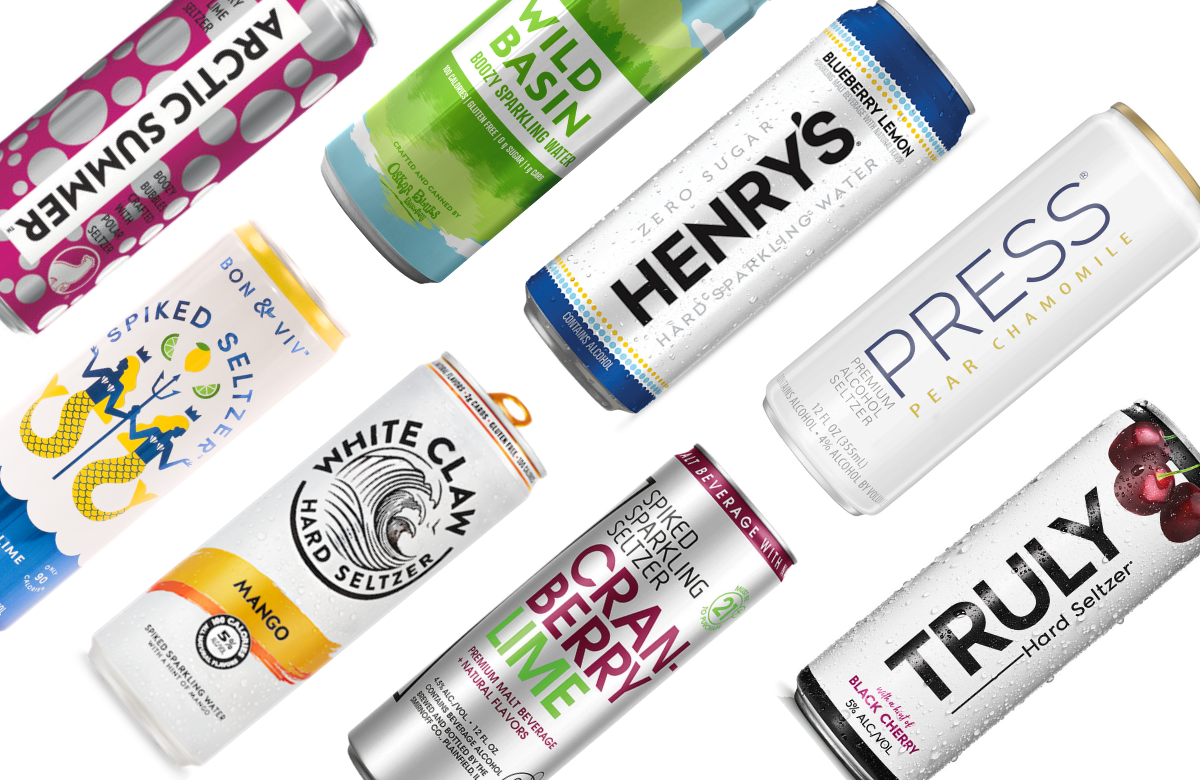Bar-hopping 20-something bros. Suburban book-clubbing moms. Boomers. And basically everyone in between.
This summer, they’ve flocked en masse to hard seltzers — by far the fastest-growing segment of the beer and malt-beverage market and one that figures to play an important role in the years ahead.
A category that barely existed three years ago has amassed more than $515 million in sales so far this year, surpassing last year’s totals with more than four months to go. Year-to-date, hard seltzers represent roughly 3% of the market. Over the summer, the sales surge has been even more sharp, accounting for more than 4.5% of total beer sales dollars in the most-recent four-week period, fundamentally changing the composition of the alcohol beverage market.
“It’s become just huge,” says Kate Bernot, managing editor of The Takeout, a food-and-beverage focused publication. “While I definitely was seeing it in stores and at bars last fall and winter, this summer the gasoline has been poured on the fire.”
The hard seltzer segment has stolen headlines across the country and barged its way into the cultural zeitgeist all summer, with sales volume growth bursting into triple digits. Four of Nielsen’s Top 10 Growth Brands are hard seltzers, led by sales leaders White Claw and Truly. The MillerCoors entry, Henry’s Hard Sparkling Water, meanwhile, is up an astounding 162% year-to-date, outpacing key competitors (Bon & Viv and Smirnoff Spiked) in terms of year-over-year growth.
And, data suggest, there’s still plenty of room to grow. To wit: The category has only about 35% awareness and just 4% of U.S. households reported purchasing hard seltzer, per data cited by the industry publication Beer Business Daily. On top of that, hard seltzers are still underrepresented in major sales channels like convenience stores and in bars and restaurants, says Harry Schuhmacher, Beer Business Daily’s publisher.
“Nobody could have forecast this much growth, and thank God for the beer industry and our distributor partners and retailers that can’t sell liquor. Without hard seltzers, the beer industry would be down between 2% and 5% this year,” he says. “But there’s still a lot of growth potential for this segment. It looks like it’s here to stay. I don’t want to say it’s the next light beer, but by next summer we’ll know so much more.”
Hard seltzer’s boom has led to a rush of new products to the market, including entries announced in the last few weeks such as Pabst Stronger Seltzer, an 8% alcohol-by-volume hard seltzer in test in five markets; Natural Light Seltzer, a 6% ABV version in market this month; and a 14% ABV sour seltzer from Four Loko that could hit test markets in the fourth quarter. Craft even has gotten in the game, led by Oskar Blues’ Wild Basin, Harpoon’s Arctic Summer and Press.
Research suggests drinkers are still picking their way through the segment, and opportunities exist for brands outside of the category leaders to grow, says Danielle Rappoport, marketing director of ciders, Mexican imports and flavored malt beverages at MillerCoors. “Brands like Henry’s are taking advantage of consumers’ preference for flavor exploration by releasing unique flavors that differentiate them in the market.”
The rise of hard seltzers follows the rapid growth of the non-alcohol variety led by the rise of LaCroix, and comes as more drinkers are gravitating toward light, lower-calorie alcohol beverages, typically with subtle fruit flavors. It also followed the explosion of Tito’s Vodka, which corralled a generation of health-conscious drinkers with its “hand-crafted” neutral spirit that undercut the industry with lower prices. “Tito’s and soda” became a go-to drink for legal-age millennials who perceived it as a healthier option for a night on the town.
Hard seltzers offer a similar proposition with an added benefit: the convenience of being packaged in a can. And as more players have rushed in, sales haven’t let up, with growth in the triple digits for each of the past four years.
“Just lower-calorie doesn’t explain why it’s popular. It’s not just fruit flavors. It’s not just the popularity of sparkling water. It’s not just that they’ve created lifestyle brands that are all about having fun,” Bernot says. “It’s all of them happening at the same time. If you combine all of those (attributes) in 2019, somehow it all makes sense.”
Financial analysts, too, have been wooed by the segment. And most predict hard seltzers will be a market-moving factor in the quarters ahead. Robert Ottenstein, an analyst with Evercore ISI, on Thursday revised his 2019 and 2020 beer industry volume estimates up 0.3 percentage points and 0.5 percentage points, respectively, based on “stronger than anticipated growth for hard seltzers.”
In a note sent to clients, Ottenstein predicted that hard seltzers will reach 5% of beer industry volumes for the full year in 2021, before eventually leveling off.
“We do not expect a ‘boom-splat’ as with hard sodas a few years ago, but expect growth to eventually slow to a more sustainable pace,” he wrote.
For now, though, everyone seems to be on the bandwagon.
Hard seltzers appear to have a broader demographic appeal than hard sodas and other short-lived phenomena, which means consumers aren’t likely to age out of them. They’re relatively lower in calories and carbs than many other alcohol beverages and they ride a health and wellness wave that is showing no signs of going away.
On top of all that, it’s an easy proposition for consumers to understand. “They’re fizzy, they taste like what they say on the can and they’re easy to drink,” Bernot says. “There’s no learning curve. There’s nothing complicated about them, and there’s a lack of pretension about them that is appealing to younger (legal-age) drinkers.”

